Lifestyle
Grab a smoothie, draw some blood. Inside L.A.'s new $50,000-a-year wellness club
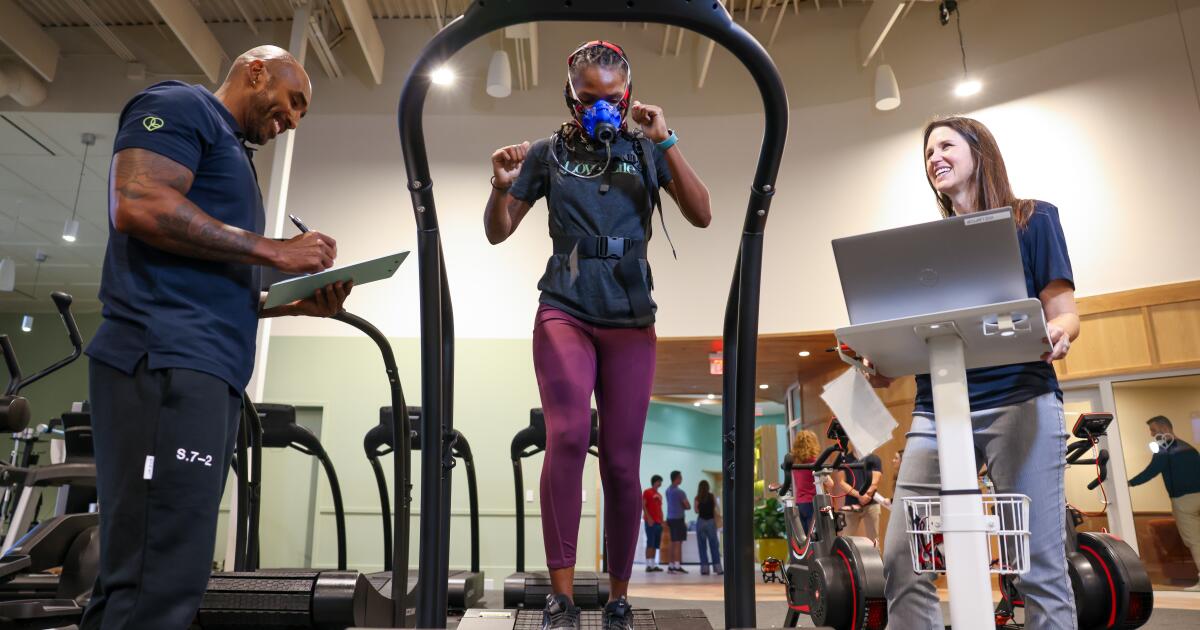
I sat in my car, in an El Segundo shopping mall parking lot, looking up at a new storefront touted as a one-stop shop for feeling physically fit, emotionally grounded and socially connected. My shoulder ached. It was my good luck that on the same day I was touring Love.Life — a new luxury health center conceived by John Mackey, co-founder of Whole Foods Market — I was also nursing a gym injury.
After weeks of navigating our infuriatingly slow medical system, it felt promising, if not surreal, to arrive at the doorstep of an establishment with nearly every treatment I could think of under one roof: diagnostic tests, rejuvenating therapies as well as fitness and nutrition plans to stave off future health problems.
I walked up to Love.Life’s entrance. Its gleaming picture windows and grass green exterior might as well have been the gates to the Emerald City, behind which mysterious healing modalities awaited. I clicked my heels together — I happened to be wearing red suede sneakers — and mumbled to myself: “There’s no place like a posh, membership-only holistic health club.” Then I headed inside, passing under block lettering that read: “Nourish Heal Thrive.”
“If this idea won’t work in L.A., it won’t work period,” says Love.Life co-founder John Mackey, who was also a co-founder of Whole Foods Market.
The lobby was blindingly bright, with porcelain floors and mod furniture in peppy colors. There was a spacious cafe on one side and a futuristic gym on the other, animated by various blinking screens. Around the corner were what looked like red-white-and-blue space pods. What they were for, I had no idea.
“Hi there,” said a receptionist at a clinically simple desk. Was I in the lobby of a boutique hotel? A doctor’s office? Or was this an astronaut training center? Or all of the above?
The idea for this lavish temple of wellness had been swirling in the back of Mackey’s brain for almost four decades. After co-founding Whole Foods in 1980, and growing the natural and organic foods store into an international network of more than 460 outlets, Mackey and company sold the publicly traded company to Amazon in 2017 for $13.7 billion.
For his next venture, the vegan, breathwork enthusiast and pickleball lover wanted to “change the way people think about health and wellness,” he told me a few weeks earlier when I met him at the not-yet-finished Love.Life space. “This is a continuation of my own higher purpose in life.”
Mackey left Whole Foods in 2022 but had already started working on plans for the club a year earlier. (It’s part of a multipronged parent company, Love.Life, that he co-founded in 2020.)
Over the last three years, he and his Love.Life co-founders — Whole Foods former Chief Executive Walter Robb and longtime executive Betsy Foster — transformed his dream into a reality: a swanky, holistic health center that’s part state-of-the-art gym, part high-end spa, part highly personalized doctor’s office and part exclusive social club. It touts specialists in both Eastern and Western modalities, as well as an on-site physical therapy clinic. Its “plants-forward” café serves superfood-filled dishes with names like Ocean Bowl and Green Tartine. Regular live events include meditations, soundbaths and breathwork classes. Love.Life even has three indoor pickleball courts.
If successful, Mackey envisions other centers in other cities before expanding internationally. But for now, the flagship Love.Life opens Saturday adjacent to — you guessed it — a palatial Whole Foods Market.
“If this idea won’t work in L.A., it won’t work period,” Mackey says. “People here are more into their health, they’re more into looking good, feeling good, they’re into longevity.”

Love.Life personal trainer Shelle Tarver plays on the pickleball court.

Love.Life team members demonstrate a yoga class.

Love.Life team members Marcie Icovino, center, and Maddy Isbell demonstrate pilates equipment.
Love.Life’s mission is to help its members live longer, healthier lives by deep-diving into their health history, executing an array of specialized tests and then suggesting fitness and lifestyle changes, paired with as many preventive health measures as humanly possible.
“We’re trying to help individuals become the healthiest, best versions of themselves — physically, emotionally and spiritually,” Mackey, dressed in jeans and a Love.Life-branded polo, says. “When do most people go to a doctor? When they get sick. Our idea is: We want you to start seeing a doctor 1723376780 so that you don’t ever have to see a doctor for the chronic diseases that kill.”
There’s a good reason most people in America don’t see a doctor until they feel ill or, say, experience shoulder pain. Our country’s healthcare is often prohibitively expensive and difficult to navigate. The “individuals” Mackey aims to help, Love.Life’s target market, are those with deep pockets who can afford to circumvent the system.
A Love.Life core membership starts at $750 a month for either a “High Performance,” “Heal” or “Longevity” membership, depending on the goal. They include five visits a year with a Love.Life primary care doctor, as well as health coaching, medical testing, fitness and recovery services and access to practitioners across 20-plus disciplines including traditional Chinese medicine, sports performance, yoga and nutrition. The membership cost tops out at the “Concierge” level, which costs $50,000 a year and includes unlimited doctors visits, 24/7 care and the most detailed level of medical testing the facility offers. There are also limited memberships, such as a medical-only or fitness and recovery-only membership for $500 a month and $300 a month, respectively.
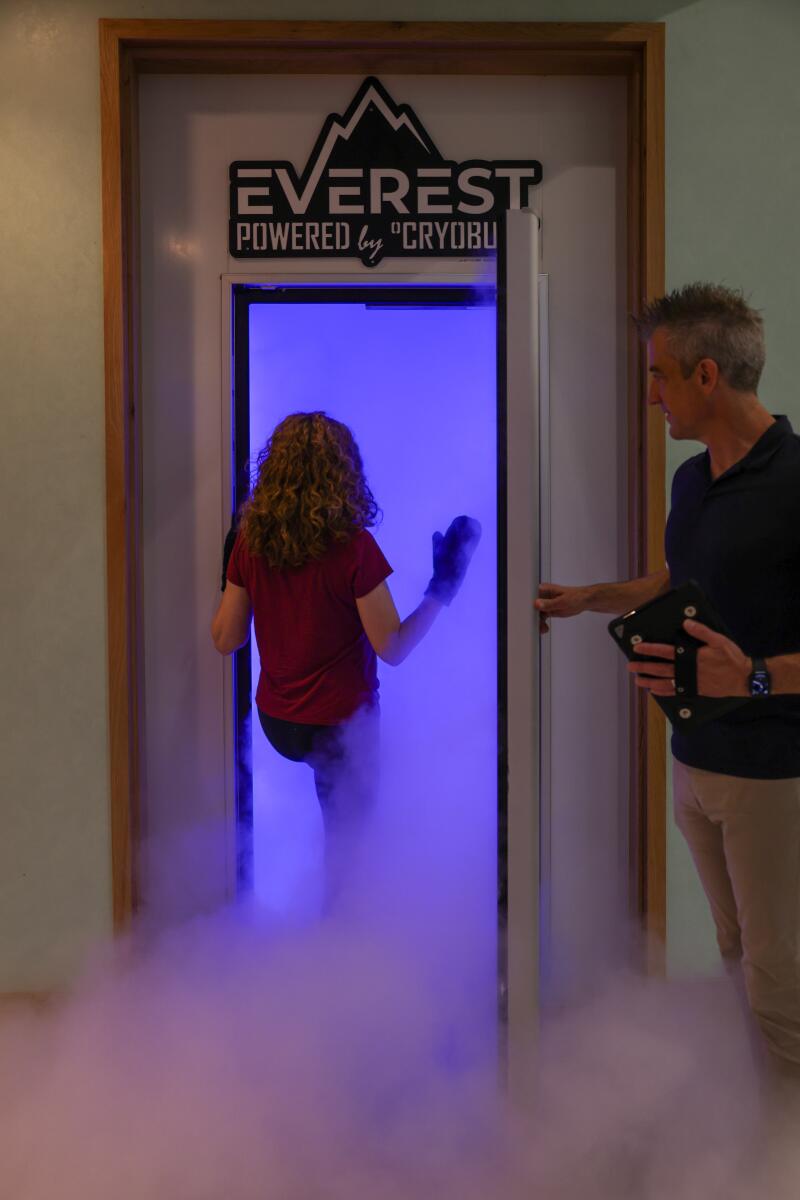
Cold vapor billows out of a cryotherapy chamber as the author steps in.

A red light lamp offers the author collagen stimulation.
Upon enrolling, members can undergo a series of tests so facility specialists have a 360-degree view of their health. It’s a journey into the bodily unknown. They may draw blood for an advanced lab panel measuring more than 120 biomarkers, have their musculoskeletal layer assessed or undergo a DEXA body composition assessment and bone mineral density scan. Other specialty tests address the microbiome, hormone health, cardiac health and food sensitivities, among other things.
From there, Love.Life experts put together a personalized fitness, nutrition and lifestyle plan for the member, which they can follow at the facility’s gym or through various treatments. Red light therapy beds to support healing? Check. Breathwork class to manage stress? Check. Hyperbaric oxygen therapy pods to reduce inflammation? You better believe it.
Members book all appointments on an app, which also stores their health history and tracks fitness progress. They can also use it to share that information with any of Love.Life’s practitioners, reserve a pickleball court, book a massage or order lunch.

The Ocean Bowl at Love.Life is packed with superfoods, like blue spirulina, cacao and chia seeds. Though memberships to the wellness club start at $300 a month, members of the public are welcome to visit its cafe.
Some parts of Love.Life will be open to the public, such as the cafe, select healing therapies and the spa, for which anyone can buy a $100 day pass. But Mackey emphasizes that membership and community are key to the experience.
“If you have friends with good habits, you’re gonna pick that up,” he says.
That one-percenter healthy living also comes with its fair share of window dressing. In designing the 45,000-square-foot space, Mackey says Love.Life worked with an acoustical engineer to manage the sound flow. Passing from the airy, bustling lobby and cafe area into the spa, the halls narrow and the lights dim. A preserved moss wall absorbs ambient sound, but for a gurgling fountain and soothing music. Crystals, mirrors and chimes were ensconced in its walls per the advice of a Feng Shui expert. A warm Turkish Hammam Table allows visitors a place to stretch and lounge opposite a wall-sized fountain.
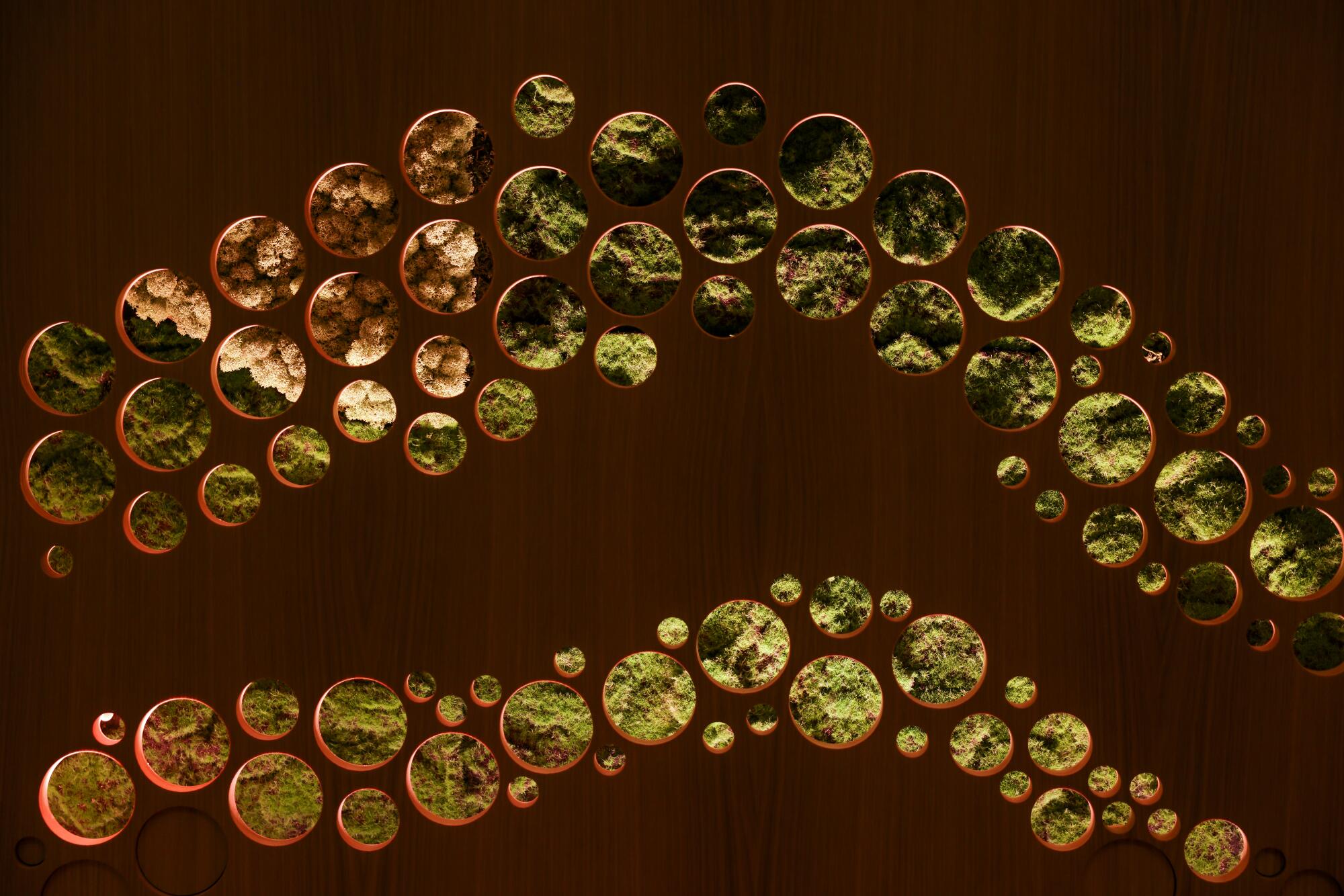
The preserved moss wall at Love.Life, which absorbs ambient sounds to keep the spa quiet.
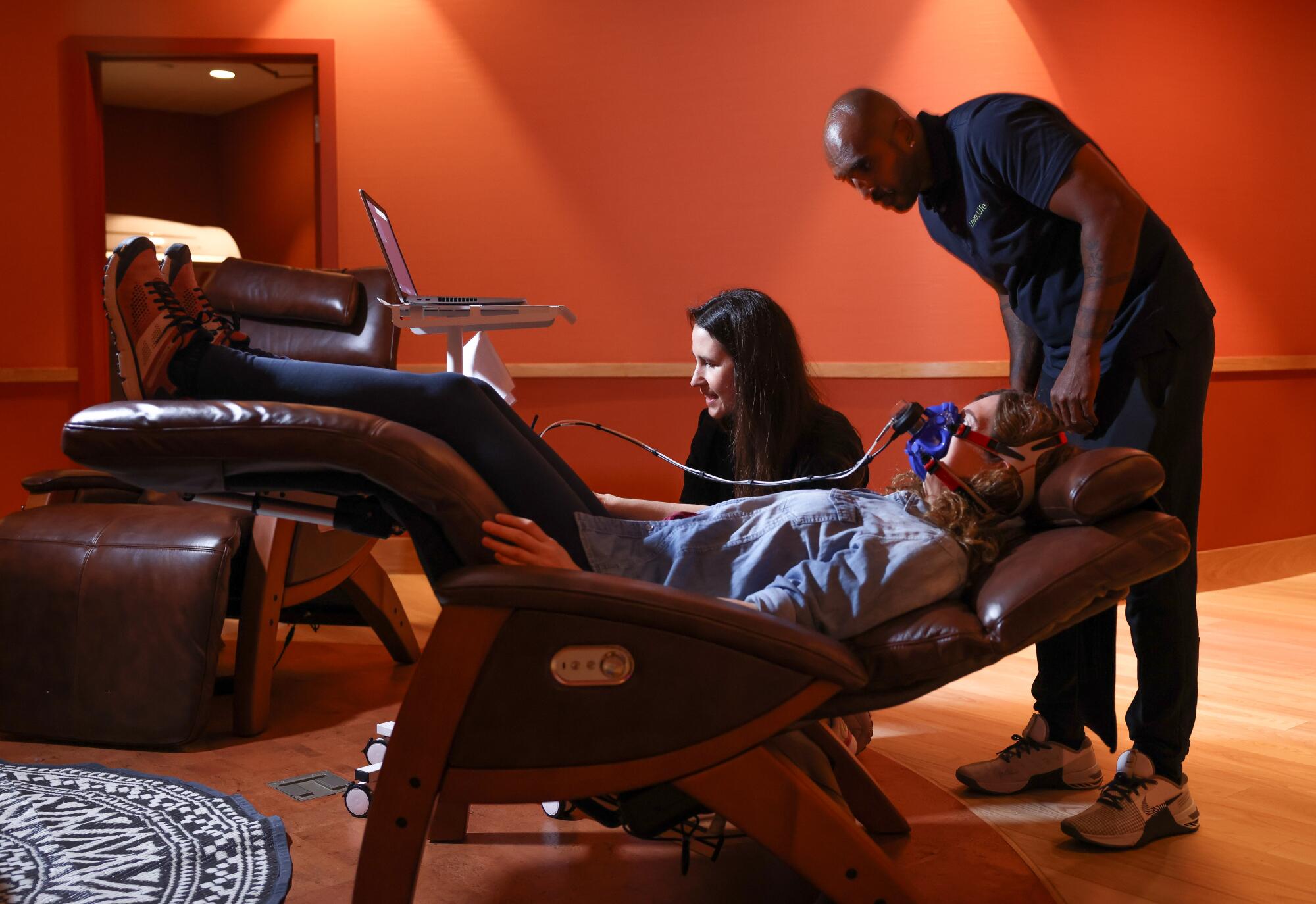
The author undergoes a resting metabolic rate assessment, measuring energy expenditure and caloric burn at rest, attended by Danél Lombard, physical therapist, back center, and Davon Murray, exercise physiologist.
I paid a $100 visitor fee to enter and relaxed into a plush, leather Zero Gravity Chair, with heated seats and massage nodes, my head draped backward and my feet pointed high. This was a resting metabolic rate assessment, which measures your energy expenditure and how many calories your body burns at rest (the test was part of my reporting, and is not included with a spa pass). Attendants fitted me with a snug Vo2 max mask, which was synced to a nearby laptop. Then I zoned out for about 20 minutes, nearly falling asleep.
When they returned, I learned exactly how many calories my body needs to think, breathe and otherwise stay alive (not nearly as many as I’d hoped for). Had I been a member, I might have met with a Love.Life nutritionist next, to configure my caloric and macronutrient needs to support weight loss or exercise performance.
From there, Love.Life regional president, Michael Robertson led me into a private room where I slid my lower limbs into what looked like a space suit, while lying on a table. The FDA-cleared Ballancer Pro lymphatic compression therapy, he said, enhances lymphatic drainage to rid the body of toxins and reduces swelling and muscle soreness. Robertson zipped me up and tapped a button before the suit began to swell and squeeze my legs. It was oddly relaxing.

Love.Life personal trainer Shelle Tarver performs squats on a high tech OxeFit machine, which gives real-time feedback on power, velocity, load and balance.
Though I skipped the gym during my visit, personal trainer Shelle Tarver was there doing squats on something called an OxeFit machine. She faced a giant, vertical screen on which her digital avatar mirrored her moves and gave her real-time data about her power, velocity load and balance so she could make her workouts more effective.
Finally, it was time to chill out — literally. Robertson led me to what looked like a tall commercial refrigerator bathed in blue and purple light. The cryotherapy chamber was set at minus-120 degrees Fahrenheit. It was so cold that the instant I stepped inside — wearing a face mask, earmuffs and mittens for protection — ice crystals began to form on my nose and snowflakes fell from the ceiling. Cryotherapy is meant to reduce inflammation and increase circulation, Robertson said; but when I stepped out after one minute, I just felt very awake.
Preventive healthcare — spending money to stay well rather than on costly medical bills once sick — is a growing trend. Whether this proactive attitude is a response to America’s sluggish healthcare system or a quest for control at a chaotic time in history is anyone’s guess. But businesses have popped up to meet the desire.
West Hollywood’s Remedy Place offers high-end, holistic “social wellness services,” plus chiropractic and biometric testing; Healthspan, a digital medical clinic, aims to help patients fight aging and chronic disease. Even traditional gyms like Equinox are now offering a $40,000-a-year concierge membership that includes sleep coaching, personal training, massage therapy and nutrition advice.
Love.Life combines all these services into one club — and goes one step further. Its members can use their designated doctor at the club as their primary care provider. The company doesn’t accept insurance, but they do offer a super bill which members can submit for reimbursements if the tests and treatments qualify under their plan. Membership, Mackey clarified, is not meant to replace health insurance, however, which is still necessary for emergencies, among other things.
When Whole Foods opened in 1980, it merged the utilitarian supermarket experience with a hippie-minded desire to nourish oneself from the land. As the brand grew, it became synonymous with a certain crunchy aspirational lifestyle. Whole Foods became more than a place to pick up a carton of milk, it was a place to assert your values, and to feel good. (And spend, as many people joked, your “whole paycheck.”)
Can Mackey find the same success with Love.Life? To thread the same needle in the legendarily opaque realm of healthcare seems a much further stretch. But when your target market has bottomless pockets, a fantasy can become a reality.

Janette Rizk, Love.Life’s communications director, has her blood pressure checked in the medical clinic.
As exciting as that might be for some people, it could have negative affects on the larger population, says Paul Ginsburg, a professor of health policy at USC.
“They’re extending the scope of what medical care is for their wealthy clients,” he says of Love.Life. “If you’re wealthy, it’s a wonderful opportunity. But physician resources are stretched pretty thin today, and if the centers were to take off, engaging physicians in service to very wealthy people means drawing their time away from treating the general population — that’s the downside.”
Mackey hopes that Love.Life will follow in Whole Foods’ philanthropic path. (Whole Planet, a project of the grocery chain’s nonprofit, has invested $113 million in global communities since 2005.)
“Philanthropy comes from success,” Mackey says. “We will do things to help improve the health of poor people. But it’ll come because we’ll have the resources to do that.”

One of Love.Life’s many cold plunge tubs.
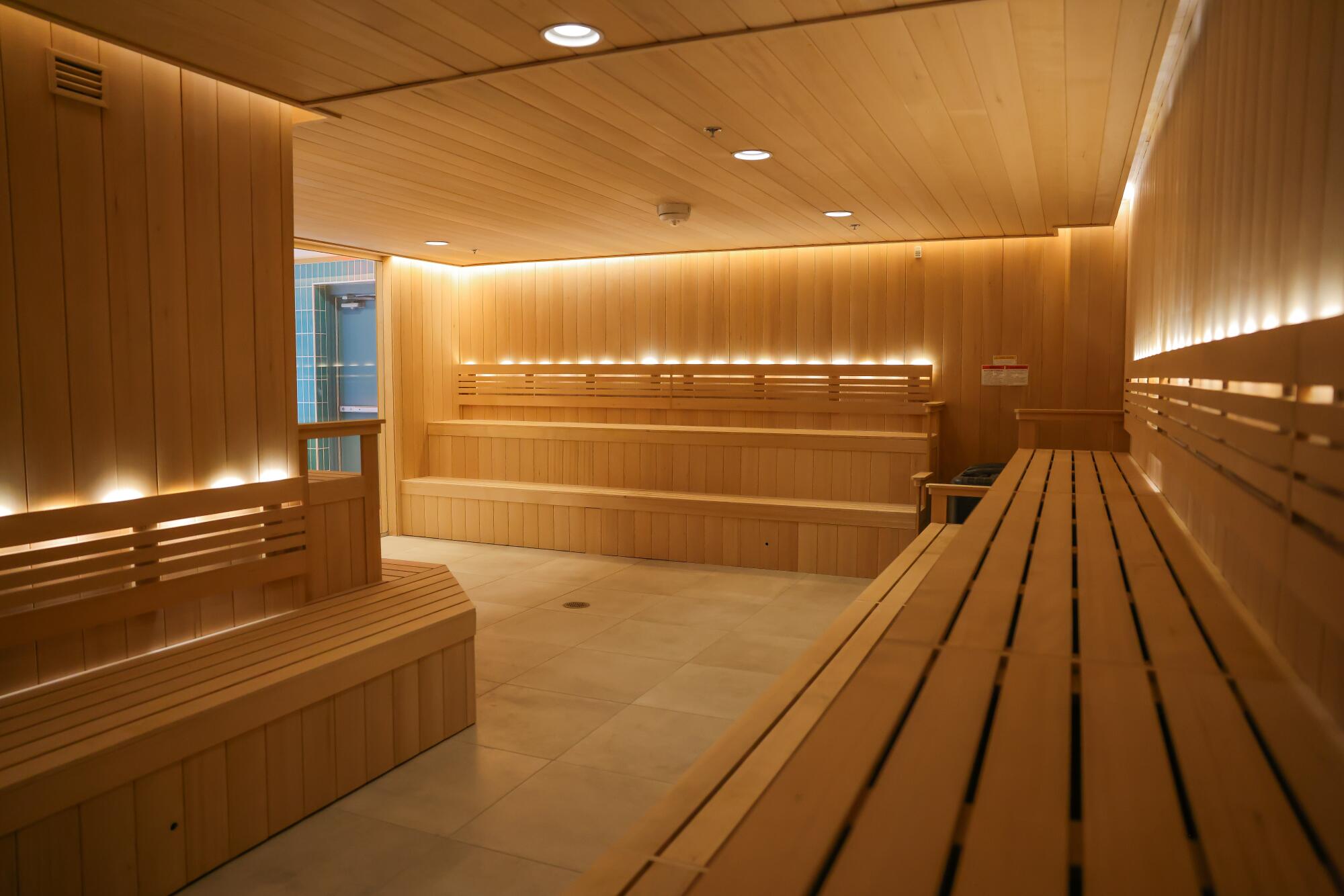
Love.Life’s spacious hemlock wood sauna in the spa.
Once my tour was over, I wistfully returned to the parking lot, a strawberry-Ashwagandha smoothie in hand. I’d enjoyed the experience more than I thought I would and longed for Love.Life’s services at my fingertips. After that whirlwind of peculiar chambers and treatments, I wondered if my ailing shoulder even felt a tad more limber.
But would I ever travel down this yellow brick road again? At Love.Life’s price points, likely never.

Lifestyle
Nick Reiner’s attorney removes himself from case
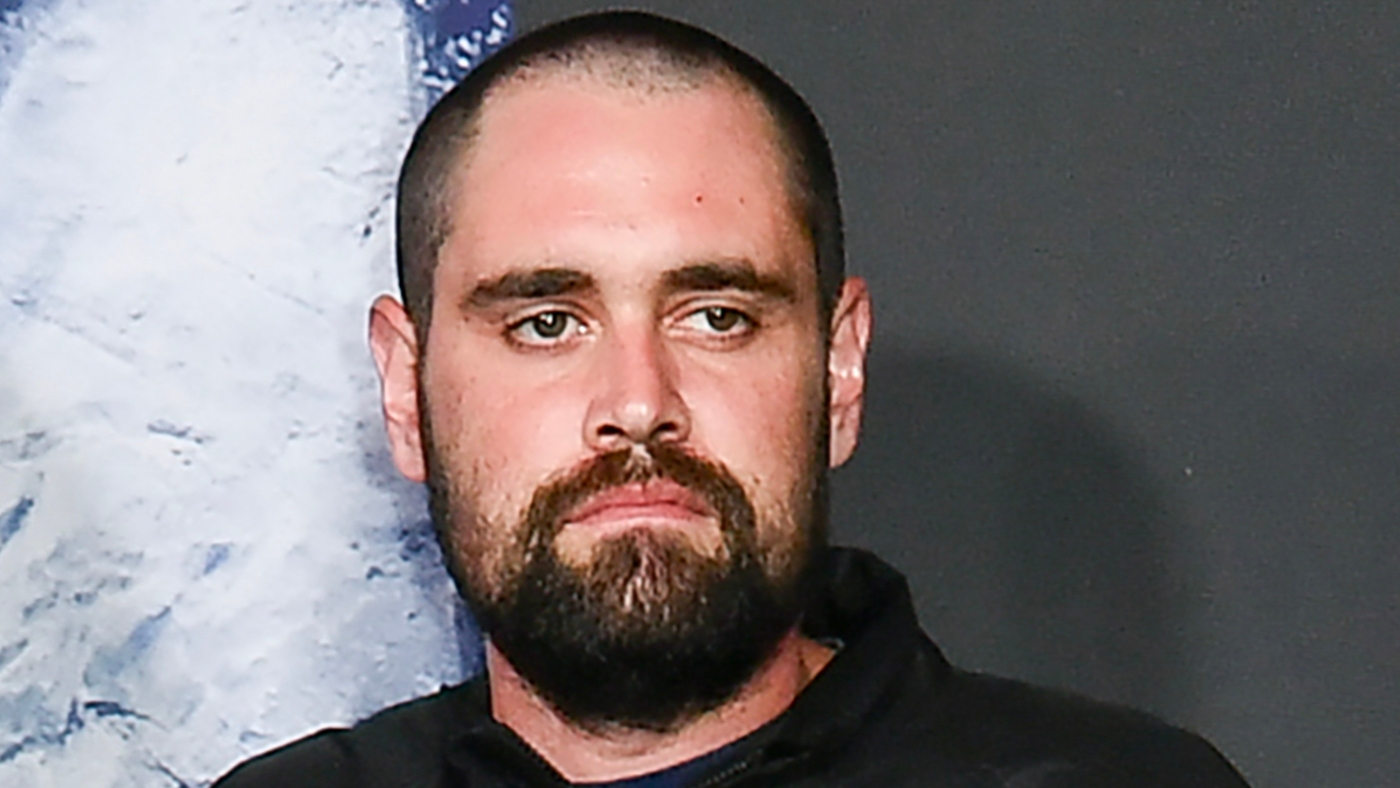
Nick Reiner arrives at the premiere of Spinal Tap II: The End Continues on Tuesday, Sept. 9, 2025, in Los Angeles.
Richard Shotwell/Invision/AP
hide caption
toggle caption
Richard Shotwell/Invision/AP
LOS ANGELES – Alan Jackson, the high-power attorney representing Nick Reiner in the stabbing death of his parents, producer-actor-director Rob Reiner and photographer Michele Singer Reiner, withdrew from the case Wednesday.
Reiner will now be represented by public defender Kimberly Greene.
Wearing a brown jumpsuit, Reiner, 32, didn’t enter a plea during the brief hearing. A judge has rescheduled his arraignment for Feb. 23.
Following the hearing, defense attorney Alan Jackson told a throng of reporters that Reiner is not guilty of murder.
“We’ve investigated this matter top to bottom, back to front. What we’ve learned and you can take this to the bank, is that pursuant to the law of this state, pursuant to the law in California, Nick Reiner is not guilty of murder,” he said.

Reiner is charged with first-degree murder, with special circumstances, in the stabbing deaths of his parents – father Rob, 78, and mother Michele, 70.
The Los Angeles coroner ruled that the two died from injuries inflicted by a knife.
The charges carry a maximum sentence of death. LA County District Attorney Nathan Hochman said he has not decided whether to seek the death penalty.
“We are fully confident that a jury will convict Nick Reiner beyond a reasonable doubt of the brutal murder of his parents — Rob Reiner and Michele Singer Reiner … and do so unanimously,” he said.

Last month, after Reiner’s initial court appearance, Jackson said, “There are very, very complex and serious issues that are associated with this case. These need to be thoroughly but very carefully dealt with and examined and looked at and analyzed. We ask that during this process, you allow the system to move forward – not with a rush to judgment, not with jumping to conclusions.”
The younger Reiner had a long history of substance abuse and attempts at rehabilitation.
His parents had become increasingly alarmed about his behavior in the weeks before the killings.
Legal experts say there is a possibility that Reiner’s legal team could attempt to use an insanity defense.
Defense attorney Dmitry Gorin, a former LA County prosecutor, said claiming insanity or mental impairment presents a major challenge for any defense team.

He told The Los Angeles Times, “The burden of proof is on the defense in an insanity case, and the jury may see the defense as an excuse for committing a serious crime.“
“The jury sets a very high bar on the defendant because it understands that it will release him from legal responsibility,” Gorin added.
The death of Rob Reiner, who first won fame as part of the legendary 1970s sitcom All in the Family, playing the role of Michael “Meathead” Stivic, was a beloved figure in Hollywood and his death sent shockwaves through the community.
After All in the Family, Reiner achieved even more fame as a director of films such as A Few Good Men, Stand By Me, The Princess Bride and When Harry Met Sally. He was nominated for four Golden Globe Awards in the best director category.
Rob Reiner came from a show business pedigree. His father, Carl Reiner, was a legendary pioneer in television who created the iconic 1960s comedy, The Dick Van Dyke Show.
Lifestyle
Chiefs Aware of Domestic Violence Allegations Made By Rashee Rice’s Ex

Chiefs
Aware of Dom. Violence Claims
… Made By Rashee Rice’s Ex
Published
The Kansas City Chiefs are addressing the recent social media post made by Rashee Rice‘s ex … where she claimed she was abused during the course of an eight-year relationship, including when she was pregnant.
The shocking allegations were made as part of a lengthy statement shared to the Dacoda Jones’ Instagram account on Wednesday … when said she kept quiet for years to protect her former partner’s image — but can no longer stay silent.
She did not name Rice directly … but certain details about the relationship match up. Rice’s own grandmother even commented on the post … and in a phone conversation with TMZ Sports, she said Jones lied about the abuse after a dispute over paying for an apartment.
In the post, Jones said her relationship ended recently … and “since then it’s been nothing but hell.”
On top of the abuse allegations, Jones claims her ex locked her outside of their home in freezing temperatures after he was caught cheating, damaged her clothes and shoes and showed up at her new home and broke her door.
Jones also claims the man abandoned her and their kids in Kansas and she had to “beg” him for money so she could drive them to Texas.
Jones says he is now trying to force her and their kids out of their home “for no apparent reason.”
“I’ve known this man for YEARS,” Jones said. “He tries to put on this persona like he’s dad of the year. He does the bare minimum and I have to beg for that.”
“I’ve protected his image too long and I’m done doing that. It’s time to protect my peace, protect my children and stand up for myself.”
Jones included images of her alleged injuries from the domestic violence incidents … as well as damage to her home.
We reached out to Rice’s attorney, Royce West, who said his client has not been arrested or charged for domestic violence and hung up the phone.
The NFL declined to comment … but the Chiefs said they are “aware” of the claims made on social media and are in communication with the league.
Rice was suspended six games earlier this season for a 2024 hit-and-run crash in Texas … and teammates like Travis Kelce and Tyquan Thornton wore “Free 4” shirts in support of him during the ban.
He pleaded guilty to two felonies stemming from the incident — one count of racing on a highway causing bodily injury and one count of collision involving serious bodily injury … and was ordered to 30 days in jail and five years of probation.
We’ve reached out to Rice’s camp. No word back.
Lifestyle
Timothée Chalamet brings a lot to the table in ‘Marty Supreme’

Timothée Chalamet plays a shoe salesman who dreams of becoming the greatest table tennis player in the world in Marty Supreme.
A24
hide caption
toggle caption
A24
Last year, while accepting a Screen Actors Guild award for A Complete Unknown, Timothée Chalamet told the audience, “I want to be one of the greats; I’m inspired by the greats.” Many criticized him for his immodesty, but I found it refreshing: After all, Chalamet has never made a secret of his ambition in his interviews or his choice of material.
In his best performances, you can see both the character and the actor pushing themselves to greatness, the way Chalamet did playing Bob Dylan in A Complete Unknown, which earned him the second of two Oscar nominations. He’s widely expected to receive a third for his performance in Josh Safdie’s thrilling new movie, Marty Supreme, in which Chalamet pushes himself even harder still.
Chalamet plays Marty Mauser, a 23-year-old shoe salesman in 1952 New York who dreams of being recognized as the greatest table-tennis player in the world. He’s a brilliant player, but for a poor Lower East Side Jewish kid like Marty, playing brilliantly isn’t enough: Simply getting to championship tournaments in London and Tokyo will require money he doesn’t have.

And so Marty, a scrappy, speedy dynamo with a silver tongue and inhuman levels of chutzpah, sets out to borrow, steal, cheat, sweet-talk and hustle his way to the top. He spends almost the entire movie on the run, shaking down friends and shaking off family members, hatching new scams and fleeing the folks he’s already scammed, and generally trying to extricate himself from disasters of his own making.
Marty is very loosely based on the real-life table-tennis pro Marty Reisman. But as a character, he’s cut from the same cloth as the unstoppable antiheroes of Uncut Gems and Good Time, both of which Josh Safdie directed with his brother Benny. Although Josh directed Marty Supreme solo, the ferocious energy of his filmmaking is in line with those earlier New York nail-biters, only this time with a period setting. Most of the story unfolds against a seedy, teeming postwar Manhattan, superbly rendered by the veteran production designer Jack Fisk as a world of shadowy game rooms and rundown apartments.
Early on, though, Marty does make his way to London, where he finagles a room at the same hotel as Kay Stone, a movie star past her 1930s prime. She’s played by Gwyneth Paltrow, in a luminous and long-overdue return to the big screen. Marty is soon having a hot fling with Kay, even as he tries to swindle her ruthless businessman husband, Milton Rockwell, played by the Canadian entrepreneur and Shark Tank regular Kevin O’Leary.
Marty Supreme is full of such ingenious, faintly meta bits of stunt casting. The rascally independent filmmaker Abel Ferrara turns up as a dog-loving mobster. The real-life table-tennis star Koto Kawaguchi plays a Japanese champ who beats Marty in London and leaves him spoiling for a rematch. And Géza Röhrig, from the Holocaust drama Son of Saul, pops up as Marty’s friend Bela Kletzki, a table tennis champ who survived Auschwitz. Bela tells his story in one of the film’s best and strangest scenes, a death-camp flashback that proves crucial to the movie’s meaning.
In one early scene, Marty brags to some journalists that he’s “Hitler’s worst nightmare.” It’s not a stretch to read Marty Supreme as a kind of geopolitical parable, culminating in an epic table-tennis match, pitting a Jewish player against a Japanese one, both sides seeking a hard-won triumph after the horrors of World War II.

The personal victory that Marty seeks would also be a symbolic one, striking a blow for Jewish survival and assimilation — and regeneration: I haven’t yet mentioned a crucial subplot involving Marty’s close friend Rachel, terrifically played by Odessa A’zion, who’s carrying his child and gets sucked into his web of lies.
Josh Safdie, who co-wrote and co-edited the film with Ronald Bronstein, doesn’t belabor his ideas. He’s so busy entertaining you, as Marty ping-pongs from one catastrophe to the next, that you’d be forgiven for missing what’s percolating beneath the movie’s hyperkinetic surface.
Marty himself, the most incorrigible movie protagonist in many a moon, has already stirred much debate; many find his company insufferable and his actions indefensible. But the movies can be a wonderfully amoral medium, and I found myself liking Marty Mauser — and not just liking him, but actually rooting for him to succeed. It takes more than a good actor to pull that off. It takes one of the greats.

-

 Detroit, MI5 days ago
Detroit, MI5 days ago2 hospitalized after shooting on Lodge Freeway in Detroit
-

 Dallas, TX3 days ago
Dallas, TX3 days agoDefensive coordinator candidates who could improve Cowboys’ brutal secondary in 2026
-

 Technology2 days ago
Technology2 days agoPower bank feature creep is out of control
-

 Health4 days ago
Health4 days agoViral New Year reset routine is helping people adopt healthier habits
-

 Nebraska1 day ago
Nebraska1 day agoOregon State LB transfer Dexter Foster commits to Nebraska
-

 Politics4 days ago
Politics4 days agoDan Bongino officially leaves FBI deputy director role after less than a year, returns to ‘civilian life’
-

 Nebraska2 days ago
Nebraska2 days agoNebraska-based pizza chain Godfather’s Pizza is set to open a new location in Queen Creek
-

 Louisiana3 days ago
Louisiana3 days agoInternet company started with an antenna in a tree. Now it’s leading Louisiana’s broadband push.


















